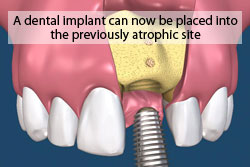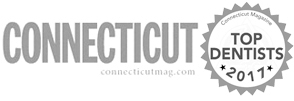Guided Bone Regeneration
Guided Bone Regeneration or, GBR, is a surgical procedure that utilizes a barrier membrane and bone graft to direct the growth of new bone at sites that have diminished bone due to periodontal disease, infection, or trauma. When a person loses a tooth, the bone atrophies or becomes resorbed. In these cases, there is not enough bone volume or quantity to accommodate a dental implant.
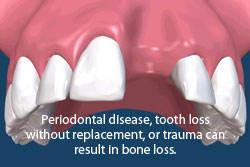
The regeneration of bone using a barrier membrane is often a prerequisite for prosthetic rehabilitation and/or implant placement. The membrane, which is either resorbable or non-resorbable, is designed to prevent the growth of soft tissue cells into the bone graft, stabilize the blood clot, and act as a space maintainer. A bone graft is often placed in conjunction with a barrier membrane.
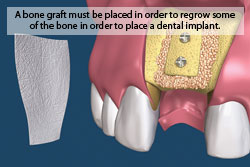
Bone grafts must be placed in order to regrow some of the bone in order to place a dental implant.
Bone grafts are made from a variety of materials. The most commonly used grafting material is called allograft, which is bone from another human donor. Xenografts and alloplasts, also grafting materials, are materials taken from another species or synthetic materials produced in a laboratory.
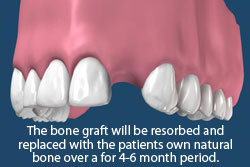
Finally, if the defect is very large, your surgeon may decide to use an autogenous bone grafts, which is bone harvested from the patient’s own body.
